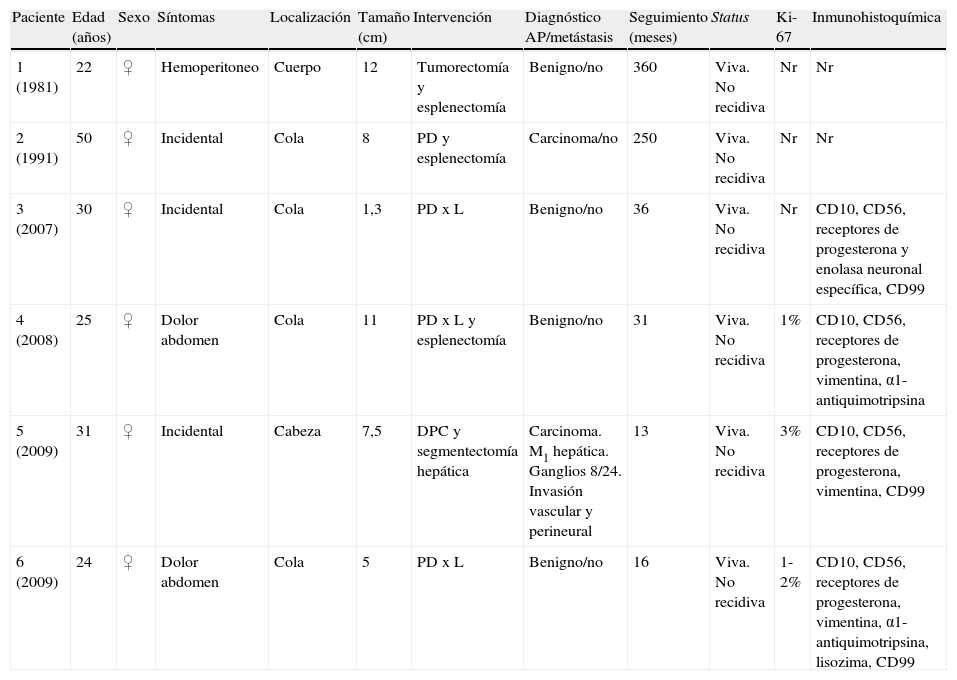La neoplasia sólida seudopapilar (NSSP) es un tumor poco frecuente del páncreas exocrino que, aunque puede desarrollar metástasis, tiene un buen pronóstico. El objetivo fue describir las características de las NSSP tratadas en nuestro hospital.
Pacientes y métodoSe incluyeron todas las NSSP de la base de datos del Servicio de Anatomía Patológica de 1981 a 2010. Se analizaron edad, sexo, forma de presentación, tipo de cirugía, datos anatomopatológicos e inmunohistoquímicos, y evolutivos.
ResultadosSe identificaron 6 casos. La mediana de edad fue de 27,5 años y todos eran mujeres. Una paciente presentó hemoperitoneo, 2 dolor abdominal y 3 eran diagnosticadas incidentalmente. La localización más frecuente fue en cola pancreática (4) y la mediana de tamaño de 7,7cm. Cuatro eran benignos y 2 carcinomas, uno de estos presentaba metástasis hepáticas y ganglionares. El índice Ki-67 fue bajo (1-3%). Después de una mediana de seguimiento de 33,5 meses, todas las pacientes están vivas y sin recidiva.
ConclusiónLa NSSP afecta a mujeres jóvenes. El tratamiento quirúrgico suele ser curativo. Un índice mitótico bajo le confiere un buen pronóstico, con una larga supervivencia.
Solid pseudopapillary neoplasms (SPNs) are rare tumours of the exocrine pancreas. Although they can develop metastasis, the prognosis is good. The aim of this study was to describe the characteristics of these tumours attended in our hospital.
Patients and methodAll cases of SPN in the database of the Pathology Department between 1991 and 2010 were included. Age, sex, symptoms, type of surgery, pathologic and immunohistochemical characteristics, and clinical evolution were analyzed.
ResultsSix cases were identified; all of them were women with a median age of 27.5 years. One patient presented haemoperitoneum, 2 abdominal pain and 3 were diagnosed incidentally. The most frequent localization was the pancreatic tail (n=4) and the median size was 7.7cm. Four tumours were benign and 2 carcinomas. One of them had liver and lymph node metastases. Ki-67 proliferation index was low (1-3%). After a median follow-up of 33.5 months, all patients were alive and without evidence of relapse.
ConclusionSPNs occur in young women. In most cases surgical resection is curative. A low mitotic index confers a good prognosis and a long survival.
Artículo
Comprando el artículo el PDF del mismo podrá ser descargado
Precio 19,34 €
Comprar ahora











